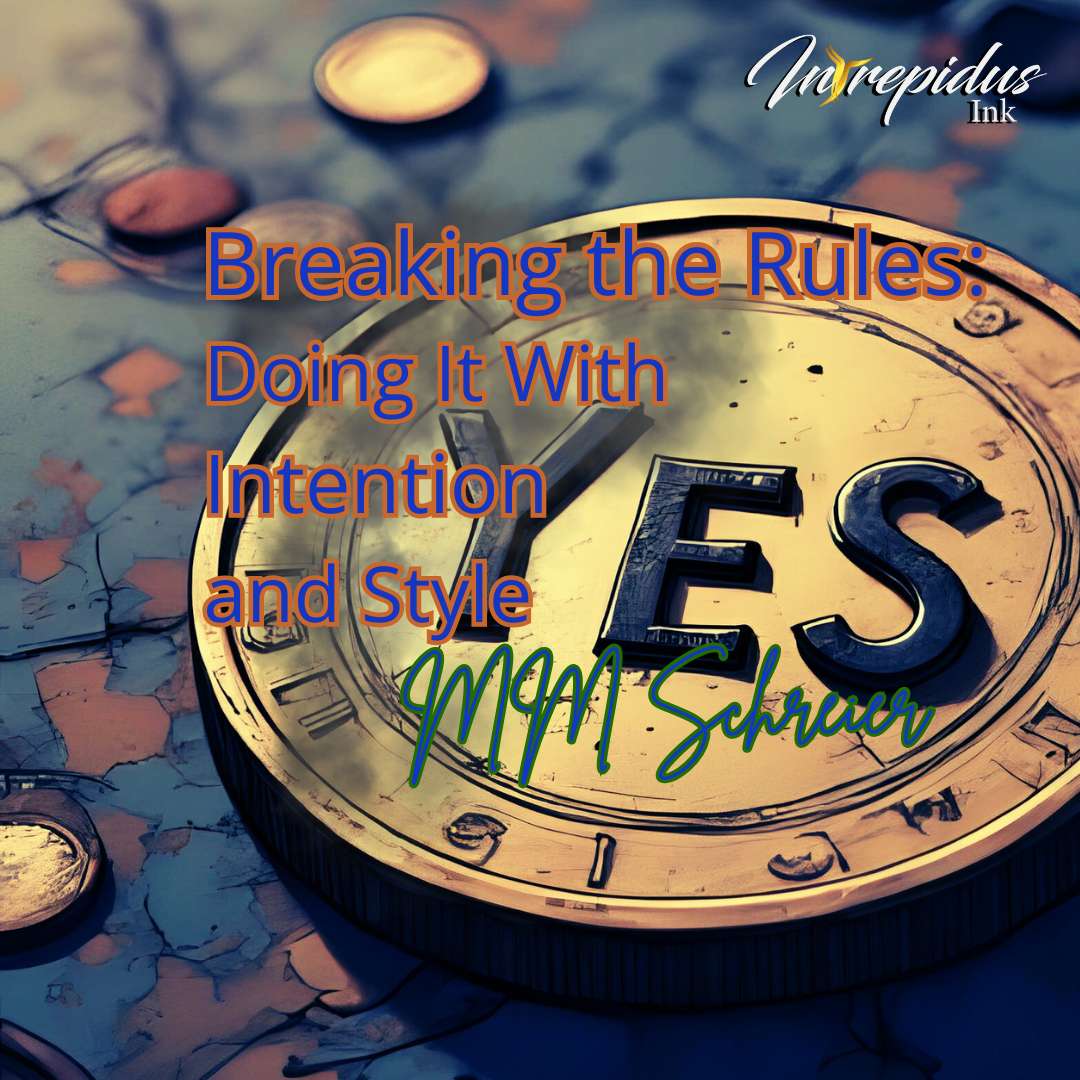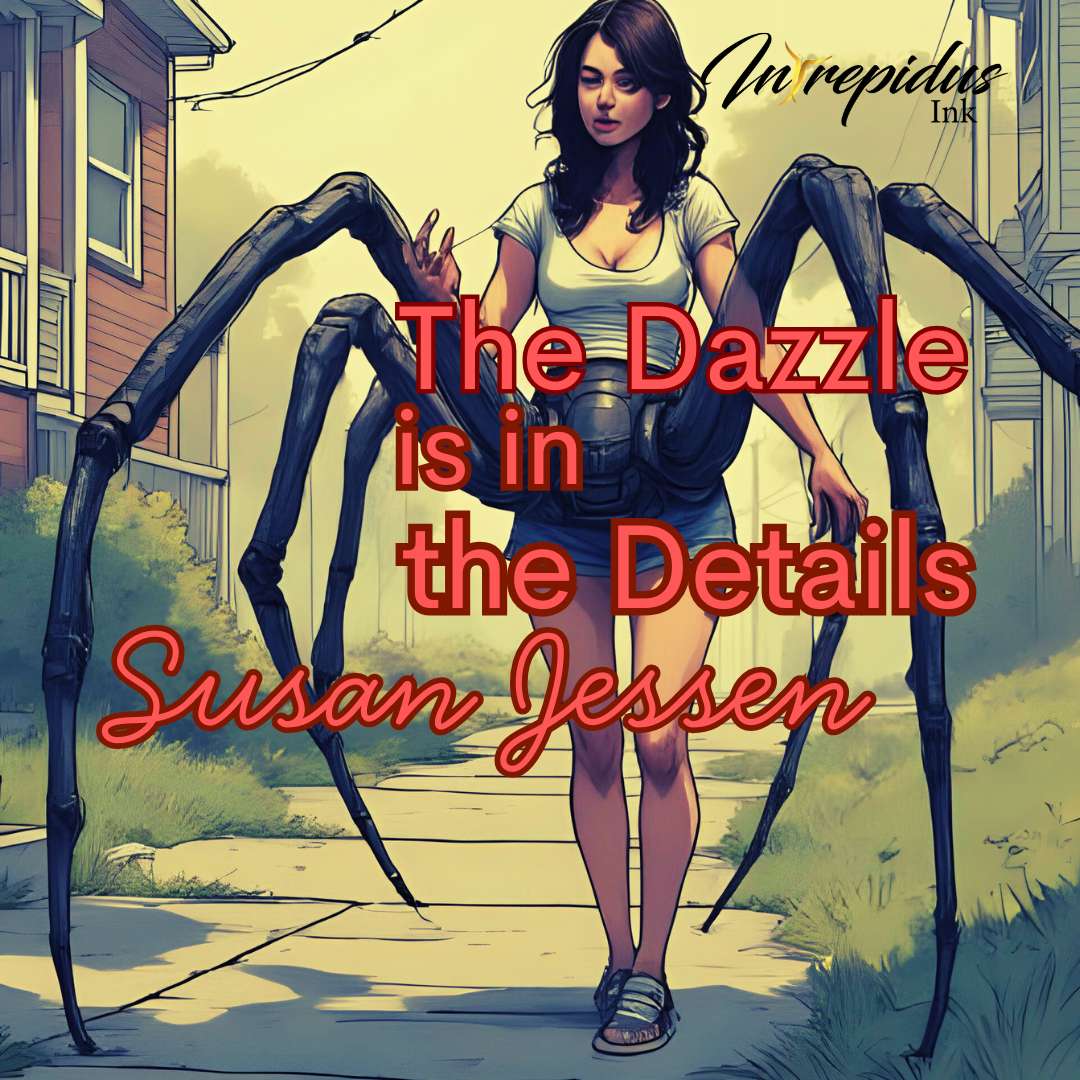
They say there are rules for a reason. But who is this mysterious they, and do we really have to listen to them? Yes, and no. Helpful, right?
When approaching writing conventions, there’s a complementary duality worth exploring. There are valid reasons we should adhere to established standards. There’s also a compelling argument for shaking things up. Let’s look at both sides of the coin.
YES, FOLLOW THE RULES
Universal grammar creates clarity. It’s accepted that certain punctuation indicates pauses or dialogue, while others connect or separate ideas. We have the same understanding of story structure – conflict adds stakes, and resolution allows for a satisfying ending.
The array of literary mandates is dizzying, but each tenet is intended to keep written language accessible. This consistency gives all readers the same tools to interpret the text.
NO, BREAK THE RULES
Creativity cannot, arguably should not, be controlled, and sometimes the guidelines don’t best serve the story. Sidestepping conventions can enhance character voice, drive pacing, foster a stylistic tone, or shape context. It can keep the reader engaged or subvert their expectations.
The trick is to do it with purpose. To be successful, it’s important to understand the why behind the principle so that your defiance translates as intentional, delivering a meaningful impact.
AUTHOR GONE ROGUE
In the story “(They Long to Be) Close to You” published at Smokelong Quarterly on June 16, 2025, author Binh Do defies conventional paragraph rules. Thoughts shift between the narrator’s immediate experience and external observations about his family in the same block of text. Multiple characters’ dialogue shows up mid-narrative. Ignoring where breaks would typically appear turns the individual paragraphs into five miniature scenes. Though each passage connects to the overarching storyline, they all have a distinct vibe.
Swaths of incomplete sentences can make a narrative feel choppy, but fragments can also be powerful when used judiciously. Binh Do selectively inserts “O, mother.” to portray lament, as well as “O, the blue!” to depict wonder. These snippets do heavy emotional lifting that would be lost in a longer and more grammatically correct sentence.
The rules of capitalization are clear: the beginning of sentences and dialogue, proper nouns, titles, and acronyms. In this piece, Binh Do fashions a new canon, capitalizing “Happy,” “Crisis,” and “Maximization of Shareholder Value.” This adds gravitas to these moments, announcing to the reader: pay attention, this is important.
ANTI-RULE HOW-TOS
Get creative with fundamentals: Run-on sentences can make the narrative breathless; split infinitives are less stiff. Unconventional punctuation might make the grammar police exasperated-surprised-amused, while adding nuance to complex sentiments.
Play with structure: What the text looks like on the page can influence the story as much as what the words say. Using white space, indentation, and alignment, or nonstandard sentence and paragraph breaks has the ability to influence the reader’s experience.
Have purpose: Tossing rules aside willy-nilly invites literary anarchy. Think about what you are trying to achieve and how it furthers the story.
Know what you’re breaking: Fully understanding the purpose of a rule can help identify if, and when, to ignore it. Flouting convention without respecting its basic principles can have unintended consequences.
Be brave: Sometimes it’s hard to know what works until you try it. Silence your inner hall monitor and give yourself permission to try. The worst that can happen is you tame some of the chaos in revision.
TAKEAWAY
Rules are made to be followed and broken. Great writing is creative, engaging, and emotionally resonant. Memorable writing takes risks. When done thoughtfully, you can elevate a traditional narrative to something truly unique.

Author Bio
MM Schreier is a classically trained vocalist who took up writing as therapy for a mid-life crisis. She has authored two short story collections–Monstrosity, Humanity and Bruised, Resilient–and is published in a wide range of speculative and literary venues. In addition to creative pursuits, she’s on Leadership for a robotics company and tutors maths and science to at-risk youth.


